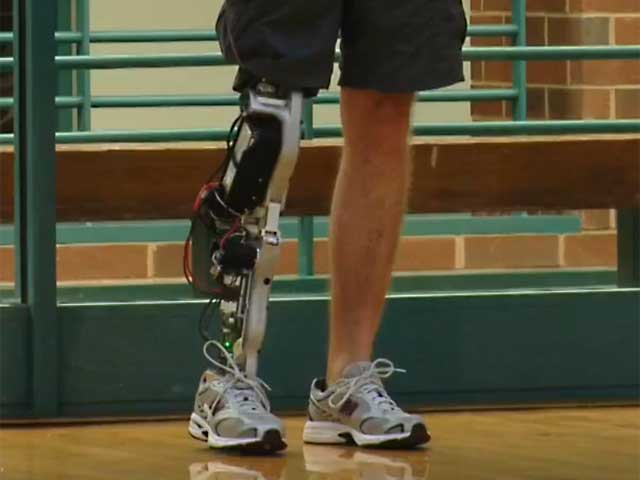Researchers at the University of Chicago have made a breakthrough in the field of prosthetics by developing a technology that could significantly improve the quality of life for lower-limb amputees. The study, recently published in Nature Biomedical Engineering, describes a technique that restores sensory feedback and reduces phantom limb pain using existing spinal cord stimulation technology.
Currently, approximately 1.5 million Americans live with lower-limb amputation, and about 80% of them experience chronic pain that is perceived as originating from the missing limb. This phantom limb pain is often resistant to traditional pain medications and severely affects the daily lives of amputees. Additionally, existing prosthetic devices lack sensory feedback functionality, leading to balance deficits and increased risk of falls.
Unlike traditional approaches that simply override pain signals, the researchers at the University of Chicago focused on restoring sensory feedback by reestablishing the connections between sensory neurons in the missing foot and the central nervous system. They achieved this by using thin electrode strands implanted over the top of the spinal cord in the lower back. These electrodes were connected to a small stimulation device, similar in size to a cell phone, which delivered electric pulses of varying intensity and frequency.
During the study, the researchers were able to modulate the intensity of sensations based on the pressure applied to a prosthetic foot during walking. Remarkably, they were also able to actively control the spinal cord stimulation parameters in real-time, allowing subjects to engage their prosthetic leg to stand or walk more effectively. This level of control is a significant advancement compared to previous research efforts.
The results of the study were promising, with participants experiencing clinically meaningful improvements in balance control and gait, even in challenging conditions such as standing on a moving platform with their eyes closed. Moreover, amputees reported an average 70% reduction in phantom limb pain, which is a highly significant outcome considering the limited available treatments for this condition.
Importantly, the technology developed in this study is versatile and can be used in people with a variety of amputation causes, including those with peripheral nerve damage from chronic conditions like diabetes, as well as traumatic amputations. Unlike other methods, this approach does not require expensive custom-made electrodes or complex surgical procedures, making it more accessible and easier to scale up on a national level.
Senior author of the study, Dr. Lee Fisher, stated that the potential of this technology lies in its ability to produce sensations as long as the spinal cord remains intact. He envisions this approach becoming a crucial intervention for lower-limb amputees within the next five years, given the proper support from industry partners.
This research holds great promise for the millions of individuals living with lower-limb amputations. By restoring sensory feedback and reducing phantom limb pain, this innovative approach has the potential to significantly improve the lives and mobility of amputees, ultimately leading to a better quality of life.

